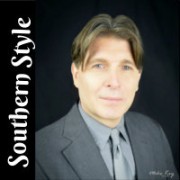Foggy Mountain Troubadour – Curly Seckler inspires
“First you cross the tie over this way and pull it back around and then…,” is how I remember Curly Seckler describing to me how to tie a string tie as he wore on stage. A lesson shared in my youth from a musical hero whose tenor voice soared in my mind as I listened to Flatt and Scruggs, and the Nashville Grass. I had convinced my mother to take me to see Curly in Nashville at an earlier point because I wanted to meet him and we searched out his home in a trailer park and went up one day and knocked on the door. He was so gracious to welcome us and share some time with an aspiring youth. He recounted this visit many years later at my mother’s home going service.

Sometime later as a bashful young fiddle player, I stepped to the concert area of the Lavonia Bluegrass Festival and find a place on a wood bench and peered up at the stage as the emcee prepared to bring on The Nashville Grass.
By the time my musical ability began to advance, the legendary Lester Flatt was ailing so I never got to see him perform except on TV or listening by radio before his passing on 1979, but on this day, I was going to see his band, the Nashville Grass perform. They were the closest link to the music which fueled my passion for bluegrass. As best I recall, Tater Tate was on fiddle, Blake Williams was playing banjo, Charlie Nixon on Dobro, Pete Corum on bass and the amazing Curly Seckler leading the troupe.
The music electrified my soul. After the show, I made my way backstage and once again was welcomed by a man who truly became one of my dearest friends in life.
A few weeks ago I received in the mail from University of Illinois Press Penny Parson’s book “Foggy Mountain Troubadour: The Life and Music of Curly Seckler” and I found myself once again feeling like that youth anxiously standing outside the door waiting to see one of my heroes.
As I looked inside and devoured the 239-page excursion walking along the path of the development of American hillbilly music that eventually became what we know as country, bluegrass, and Appalachian folk music, I was deeply impressed with Parson’s great depth of narrative, her enthusiastic approach to the inclusion of research which set the story in history; and the variety of interviews with notable performers and everyday folks who played a part that propels the story forward.
Curly, an International Bluegrass Music Hall of Famer, who is now retired at the age of 96 living with his wife Eloise outside Nashville saw the industry’s growth looking out of a car, bus and truck window mile after mile along the two lane roads crisscrossing America. He saw the American people from the stages of tent shows, movie theaters, the roofs of drive-in theater concession stands, courthouses, school houses, auditoriums, music festivals, and radio barn dances going by many names including the Grand Ole Opry. He helped sell two of America’s consumer staples Martha White flour and corn meal.
I learned more about his professional approach that opened doors for other legends like the Stanley Brothers, Jim and Jesse McReynolds and so many others. How his musical and vocal ability kept him always within sight of another opportunity around the corner with yet another group or musician which contributed so much in their own right to our musical experience. The book details his musical intersections with artists such as Charlie Monroe, Bill Monroe, Ramblin’ “Doc” Tommy Scott, the Sauceman Brothers, Shenandoah Valley Cutups, Steep Canyon Rangers, and countless others.
The depth of his experience and relationship with Lester Flatt and Earl Scruggs and the other key Foggy Mountain Boys sets in stone his place of honor as the final surviving 1940s and 50s member of the Foggy Mountain Boys. In case, that doesn’t ring a bell, he was one of the musicians who inspired Paul Henning to feature Flatt and Scruggs music on “The Beverly Hillbillies,” making the group’s stars a household name.
“Foggy Mountain Troubadour” is a must read for anyone who would like a window into the world of the American South, the rise or country music and its early stars, and especially to gain an appreciation for an American musical treasure – Curly Seckler.


